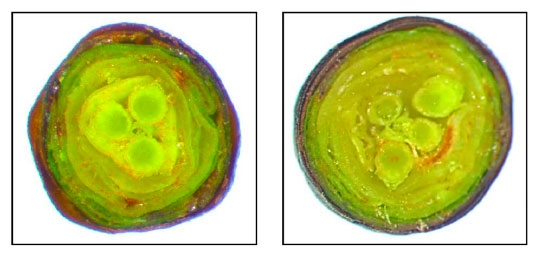Cherry fruit buds are swelling, green tip is starting—another cherry season is fast approaching.
The total effects of all the factors that come together to define the cherry crop for the coming season are pretty much locked in.
The chill hours or lack of; the crop load last season (be it over cropped, just right, or lacking); the rootstock and scion combination (did you really plant that precocious cropper on that dwarfing rootstock?); the number of flowers per bud; the health of bee hives (and if the weather allowed bee movement for adequate pollination); adequate soil moisture at blossom; enough water to grow the crop to its potential; and enough nutrient flow from the tree’s reserves and the soil to the crop.
These are some of the contributing factors that will result in a cherry crop being satisfying or disappointing.
The great unknown is how this season will stack up in comparison with past seasons. We do know that every season is different and each brings its own challenges or special variations such as insect plagues, challenges of weather conditions and more.
Cherry varieties and cropping
Some varieties are known to crop well most seasons and are consistent regular bearers. Most self-pollinating varieties (e.g. Lapins) fall into this category
However, if Lapins are overcropped for two or more seasons they will have a 'rest'—they will produce fewer fruit buds, or fewer flowers per fruit bud.
On the other hand, Merchant normally has fewer fruit buds per tree than Lapins to begin with when on vigorous rootstocks. Put Merchant on a more dwarfing rootstock the crop seems to improve and becomes more regular.
GA
Be aware that overuse of gibberilic acid on most varieties during past growing seasons can result in a reduction of fruit bud intensity for the next season.
Crop load management
Lynn Long, former extension horticulturist with Oregon State University, has developed a way to assess the number of flowers in a dormant fruit bud.
The following is an excerpt from the Good Fruit Grower, December 2017.
“Your cheapest crop load management technique starts with your pruning, if you come to the spring and you see there are too many cherries on your tree, everything becomes more expensive,” said Lynn Long, semi-retired extension horticulturist with Oregon State University in The Dalles.
“I really think that we often miss our first opportunity to control crop load. Too often I see growers chasing a crop.
“One year there is too much bloom and the cherries are small, so the next year they go and prune really hard, and then they have a light set because they pruned too hard.
“They respond to last year’s crop rather than looking forward to the coming crop, and I think that’s a mistake.”
Instead of basing pruning on the past season’s fruit set, Long recommends assessing the upcoming season by cutting dormant flower buds to see how many flowers are developing. It takes some time, but doing it in every block will help growers prune smarter.
Although it is no longer winter, cutting across section of the bud will still give a clue into the potential crop for this season.
I suggest you give it a try and prepare to be alarmed, happy, or pleasantly surprised.
See this article in Tree Fruit Sept 2019






















